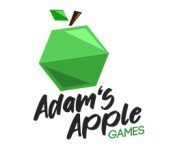Information Overload
- Jason

- Oct 18, 2020
- 3 min read
Updated: Oct 31, 2020

Games are loaded with information. Scores, rules, positions and statuses are data players need to decide their next move. Though all that data is relevant, organizing the information so that it’s accessible and meaningful is the key to a good User Interface (UI).




Information overload is a great way to kill the fun and overwhelm the new player. People’s eyes glazing over when all the rules and numbers are dumped on them at once. Sovranti’s goal is to help people connect to each other through boardgaming (even when they can’t be there in person.) The platform’s UI endeavors to be both informative and effortless. The balancing act of presenting all necessary information while being unobtrusive starts with understanding the game completely then prioritizing information moment by moment.
The platform is rules enforced. When you take an action, the UI highlights according to its playability. Being true to the actual board gaming experience, it doesn’t say whether or not that action is good strategically just if the rules allow it. For example, a piece or placement that is legal will highlight in green. We present the game board on a table surrounded with avatars so that players have access to the game’s information much the same way they might in real life. The publishers worked hard to create an experience and excitement; we try to hold true to their vision.
Our UI’s job is to get you through the actions of the moment. Players will only see the green highlight around their screen when the table is waiting for them to make a decision. In this way, the UI instructs on what a legal play is while also letting that player know it’s their turn to go. Using a subtle, consistent reminder conveys vital information but preserves the game’s original aesthetic.
After actions are taken, Sovranti includes simple animation and automated but visible scoring to demonstrate to players the results of their choices. Helping with the “crunchy” bits of math is one of the advantages of a digital board game, but that help can’t come at the cost of excitement or learning. Keeping this type of visual presentation consistent across the platform limits distraction and makes it so folks comfortable with one game on Sovranti will have an even easier time with the next.
One of the biggest challenges of honest digital representation of board games, is how the player’s themselves are included as part of the landscape of information. What are social dedication games like “Never Bring a Knife” like without checking someone’s poker face? Leading up to early release, we’ve been taking feedback from the testers and online conventioneers. The UI has a major overhaul coming up before the end of the year, and one of the areas we’re focused on is the information about your opponents at a glance. Player portraits is the topic of the next blog.
Release Updates
Publisher: Magpie Games
Sovranti Developer: Eric

Eric started development on Wizard Kittens! The first thing we typically do is read through the rules and layout the overall game flow.
Things to look forward to:
Gremlin - Magpie Games made this custom kitten to celebrate our upcoming release of Wizard Kittens on the Sovranti platform!
Publisher: Adam's Apple Games
Sovranti Developer: Paul

Paul is working on adding event cards and then is moving on to asymmetric planets. Putting together the base game and artwork was essential before the asynchronous rules. For several weeks, we've been laying out how to tackle these new boards in an isolated fashion.

.png)









Comments